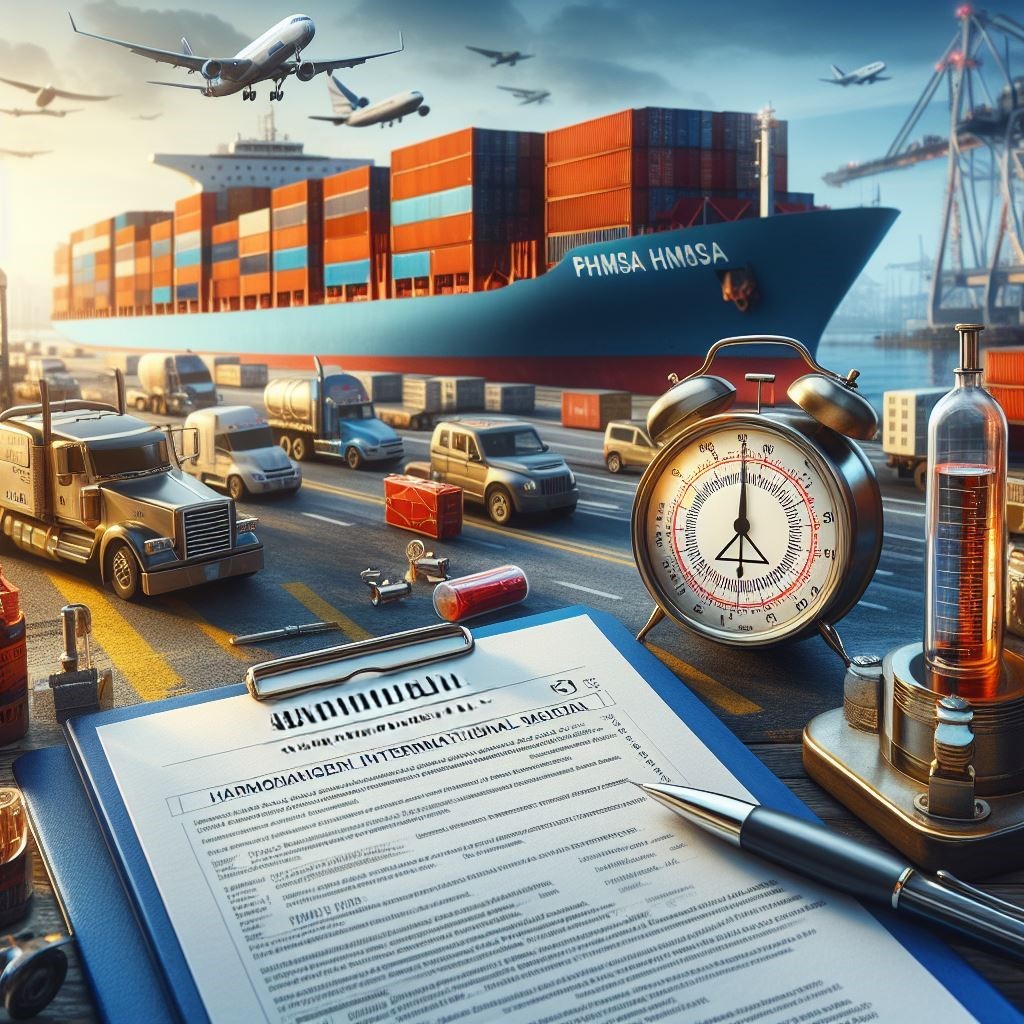
Working in the hazmat industry requires a thorough understanding of the regulations that oversee the transportation of dangerous goods. For hazmat employees, it’s critical to remain informed about these regulations and any updates or modifications to avoid costly non-compliance consequences.
Fortunately, there are credible resources accessible to help hazmat professionals maintain their training and stay current with the latest changes. Hazmat University offers self-paced online hazmat training courses that are regularly updated with the most recent 49 CFR, IATA, and IMDG rules and amendments. This helps ensure that users meet the latest requirements for both initial and recurrent hazmat training.
This blog serves as a timely reminder that the new PHMSA Final Rule HM-215Q has been published on April 10, 2024, with a voluntary compliance date of January 1, 2023, and a delayed compliance date of April 10, 2025.
The US DOT’s Pipeline and Hazardous Materials Safety Administration (PHMSA) has published the long-awaited Final Rule HM-215Q, which contains new and revised provisions to US CFR Title 49 Parts 100-185 to reflect harmonization with the current international dangerous goods transportation standards.
Final Rule HM-215Q was published on April 10, 2024, with a voluntary compliance date of January 1, 2023 and a delayed compliance date of April 10, 2025. This final rule may be viewed in its entirety at https://www.govinfo.gov/content/pkg/FR-2024-04-10/pdf/2024-06956.pdf.
This final rule incorporates by reference the current editions of international dangerous goods standards, including:
- The 2023-2024 Edition of the ICAO Technical Instructions for the Safe Transport of Dangerous Goods by Air (ICAO TI);
- Amendment 41-22 to the International Maritime Dangerous Goods Code (IMDG Code 2022 Edition);
- The 22nd Revised Edition of the UN Model Regulations;
- New, revised or updated ISO standards; and
- New Organization for Economic Co-operation and Development (OECD) standards.
Several amendments have been made to the 49 CFR Part 172, to include additions and revisions to entries in the §172.101 hazardous materials table and new and/or revised Special Provisions.
Notable changes have been made to 49 CFR Part 173:
- The De minimis exceptions of §173.4b have been amended to make reference to the packing of non-infectious specimens in formaldehyde solution.
- Temperature control requirements of §173.21 for certain materials in portable tanks have been revised;
- An additional authorized testing method concerning Packing Group assignment for Class 8 materials in §173.137;
- Clarification that the use of entry “ID8000 Consumer Commodity’ is authorized for multimodal transportation when these specific limited quantity shipments are prepared in accordance with the revised provisions of §173.167;
- Several updates to §173.185 regarding transportation of lithium batteries, including removal of the requirement for a telephone number to be shown on the lithium battery mark;
- Updates to the §173.224 Self-reactive Materials Table and the §173.225 Organic Peroxides Table;
- §173.232 amended to include new packaging provisions for UN3548 and UN3538 that may contain small lithium cells or batteries which meet the requirements of §173.185(c);
- Updated provisions for gases in UN pressure receptacles in §173.301b, §173.302b and §173.302c;
- Updated packaging authorization §173.311 for UN Metal hydride storage systems (UN3468).
Amendments to 49 CFR Part 175 include:
- A new paragraph to §175.1 referencing FAA requirements for operators to implement an SMS in accordance with 14 CFR Part 121;
- Several revisions and clarifications to the §175.10 Exceptions for passengers, crewmembers, and air operators;
- §175.33 removal of the language excepting small lithium cells and batteries (UN3480 and UN3090) from the requirement to be shown on the notification to pilot-in-command.
The following sections of Part 178 and Part 180 are affected by this rulemaking:
- §178.37;
- §178.71;
- §178.75;
- §178.609;
- §178.706;
- §178.707; and
- §180.207
While we have tried to highlight notable areas of HM-215Q above, we encourage you to review all of the provisions included in this Final Rule and contact us at the Bureau of Dangerous Goods with any questions you may have regarding how your dangerous goods operations may be affected.
Stay Ahead of the Curve in the Hazmat Industry with Hazmat University’s Dynamic Online Training Courses
The hazmat industry is ever-evolving, with the Department of Transportation (DOT) frequently updating and amending regulations. These changes aim to enhance the safety and efficiency of hazmat shipping by incorporating new regulations, special provisions, and international standards.
At Hazmat University, we provide a comprehensive selection of online hazmat training courses. These courses are designed to equip you with a thorough understanding of the regulations and standards for all modes of hazmat transportation, whether by air, sea, or ground. We regularly update our training materials to ensure compliance with the latest regulatory requirements.
Whether you require initial or recurrent online hazmat training, Hazmat University offers user-friendly and easy-to-understand online courses to meet your compliance needs. Our innovative Dynamic Learning Environment fosters interactive and experiential training with excellent learning outcomes.
To place your order or to receive more information, contact us today at 844-427-0167 or contact us online.
Be Confident. Be Competent. Be Compliant.